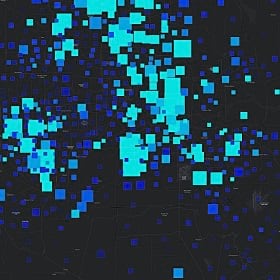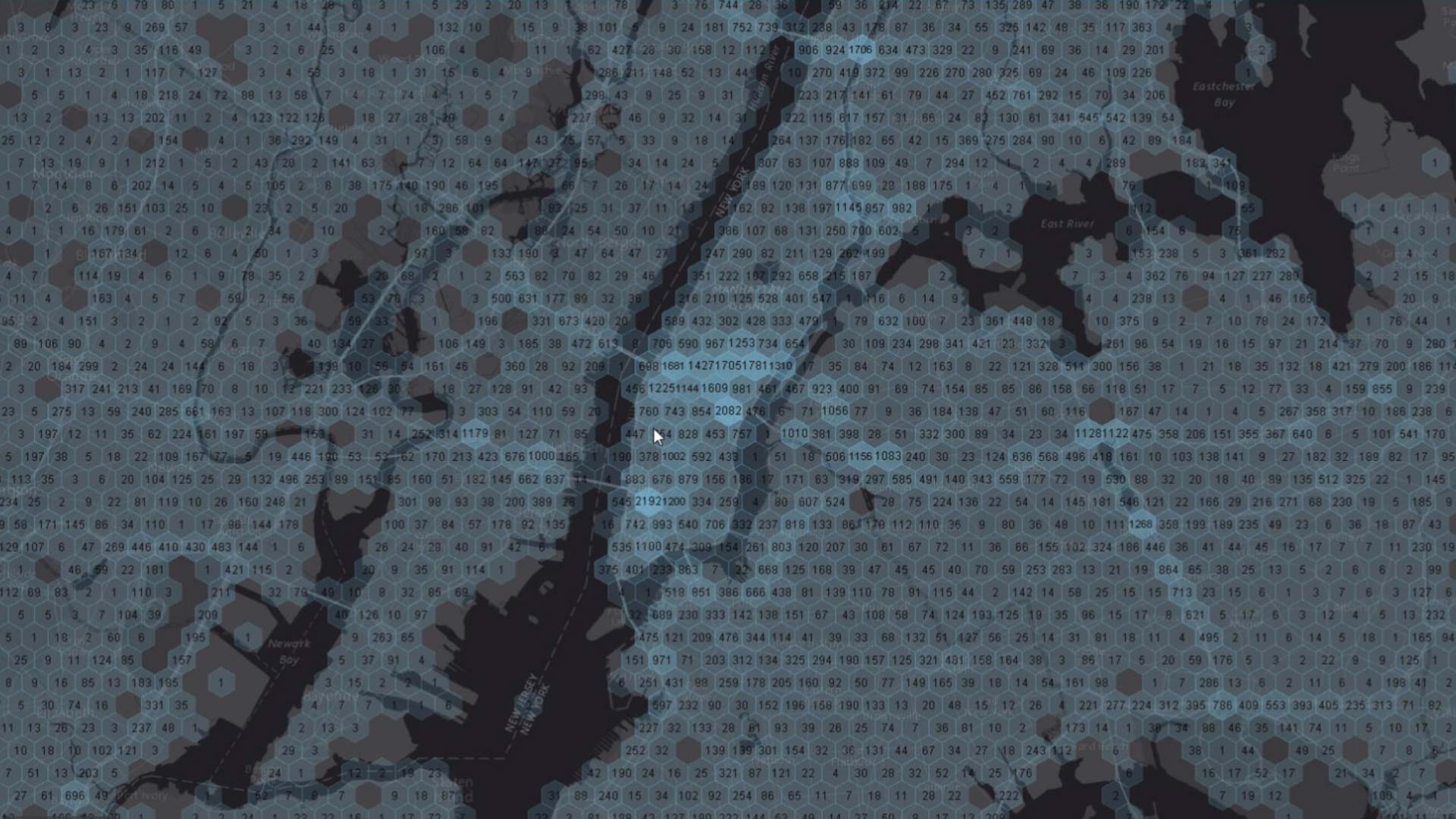In some ways, the man who heads the data solutions department for Canvas Worldwide—the world’s second-largest independent media agency and AdWeek’s breakthrough media agency of the year—hasn’t fundamentally changed from when he was in middle school 25 years ago.
Born in Kingston, Jamaica, and raised in Fort Lauderdale, Florida, Stephen Roach was known among his childhood friends for his brains, trustworthiness, and his many interests. He was a basketball fan and an art enthusiast, a car devotee who loved to get under the hood and fix things. He was also a teen who seemed more responsible than his older friends. And he was the first among them to explore personal computers and the internet—back before the general public knew much about either.
That may seem like a grab bag of unrelated teenage hobbies, but Roach’s passion for technology, art, and do-it-yourself projects eventually coalesced into a special talent for delivering location intelligence to some of the world’s best-known brands. Using a geographic information system (GIS), Roach not only uncovers trends in data, but he also turns those discoveries into appealing visual displays that provide fresh insight on customers and competitive markets.
Youthful Passions for Art and Technology Open New Lines of Work
In high school and college, Roach couldn’t fathom a career path that complemented his interests. “I really did not know what I wanted to do,” he says. “But data was definitely a calling. . . . I kind of found a passion for looking at data points and being able to visualize them.”
That passion put him on track for a career in marketing and advertising at a time when companies were seeking a deeper understanding of consumer buying preferences across and within geographies. Using location intelligence generated by GIS technology, agencies began to offer data analysis as a client service, helping world-renowned companies find customers interested in their brands and products.
Roach carved out a vital role in the industry by combining his teenage passions for art and technology. He found that GIS helped him present complicated analyses in artistic ways, translating spreadsheets into maps and dashboards that revealed everything from customer spending patterns to lifestyle choices and demographic changes. His work gave brand executives a data-based view of what consumers cared about.
In that way, Roach was part of a larger trend across the business world, as companies in industries from retail to insurance to consumer goods hired data analysts who could harness location intelligence to understand customers and competitors, and present that insight in intuitive ways.

How do you get all these data points, and visualize that immediately for any executive who really doesn't have that much time to get it? . . . I always saw the beauty in someone getting it immediately.
Building a New Lane for Business
Even in the fiercely competitive world of advertising and marketing, Roach stood out as uniquely skilled, dependable, and generous.
“He was always pushing new boundaries in the company and creating his own lane,” says Gevance Henry, who has known Roach since middle school, shared his love for basketball and cars, and even knew him as a coworker at a Florida ad agency. “He was always that go-to guy for [data analysis], and the company heavily relied on him.”
That included using Roach’s location analysis in pitches to bring in new business, Henry says.
Indeed, when Henry, a project manager, first interviewed at the agency where his friend worked, the interviewer spoke highly of the location intelligence Roach brought to the company with his GIS skills.
“I’ll never forget,” Henry says, “when I went in and interviewed with the vice president, he was raving about Stephen, and saying he’s such a great guy. … He’s created his own lane.”
Information Sharing Wins Clients and Colleagues
“When we had client presentations, Stephen would be there front row center showing them what he was able to do,” explains Erika Murray, another former colleague. “He would say, ‘Give me a ZIP code.’” Then he would take the client’s suggestion, zoom in on a GIS-powered map, and reveal a plethora of relevant business data.
Murray recalls him ticking off stats and traits. “He was like, ‘within this ZIP code, you have five of your competitors. Of those competitors, there are 53 percent . . . Oh, this is your suburban area, where the middle-class range of salaries is between. . .’”
Clients were impressed. “That’s what sold the product,” Murray says. “When clients can see what you can do with their data from a geolocation standpoint to where you can drill down within a 10-mile, a 5-mile radius of their competitors, and how often people are coming—even the weather—it was pretty impressive stuff.”
Roach doesn’t hesitate to share his knowledge with colleagues. Many of them are surprised—even shocked—by his professional generosity. Murray was more accustomed to coworkers who kept things close to their vest.
“It was just so amazing,” she says. “Because his level of intelligence and his thoroughness and being able to articulate what he does and how passionate he is on why it’s important—it gets you into it. You want to know more.”

Former colleague Erika Murray recalls Roach wowing agency clients with his deft use of well-vetted and unexpected data, while presenting on electronic screens full of colorful dashboards, smart maps, and metrics.
Keep Honing the Craft
Several years ago, Roach had a discussion about success with one of the doctors who worked with his mother, a nurse. “If you want to become anything special,” the doctor told him, “you have to consistently work on your craft.” Roach asked about all the training the doctor had received in school. Wasn’t that enough? “No,” he replied. “I don’t stop growing. I don’t stop learning.”
Roach has applied that thinking to his customer analysis and location intelligence work. For example, early in his career, he overlooked important nuances of the Hispanic market—as did many marketers. People from Puerto Rico, Cuba, Mexico, Peru, Argentina, Venezuela, and other Latinx countries have distinct traditions and tastes, but many in the marketing world treated them as one group because they share a common language. Roach credits his wife, who is Hispanic, for helping him realize the subtle but important differences that can be discerned with a little effort and location analysis.
The notion also applies to the way some companies try to understand customers by simply looking at the characteristics of a designated market area (DMA). That essentially means dividing up the US—with its endless diversity—into about 200 geographic segments. Roach considers that a common unforced error, since location intelligence can help companies dig deeper and compare the diverse preferences of people within a ZIP code or even one section of a city. Flooding a large DMA with one-size-fits-all messaging for a product or an issue is not an efficient or particularly effective way to spend marketing budget, Roach says.
Still, it’s not necessary to invade someone’s privacy to target messages effectively. “I don’t need to know someone’s name,” Roach says. “What I care about as a marketer is, ‘Are you interested in this product that my client wants to advertise? If you’re not, then you shouldn’t be seeing this.’”
A New Firm, and a Thirst for New Information
Roach recently moved to California to join Canvas Worldwide, where he works with a former colleague.
Alisa Ben, who leads data solutions for Canvas Worldwide, says Roach will bring the expertise and openness needed to expand the company’s use of data to help clients. She is especially hopeful that Roach will be able to use location intelligence to account for the changes and trends that have occurred during COVID-19 restrictions, which kept many businesses from opening and customers from visiting physical sites. Pandemic effects vary greatly depending on state, city, and area of town.
“It becomes more important than ever to really understand what each area is going through,” Ben says. “We must understand the client’s brand, for sure, but every part of America is functioning very differently right now. Understanding that is what I believe is going to be more important than ever—the right messaging at the right time, in the right location to the right audience.”
She knows that Roach is the right person for the right job at the right time, in part because of his conscientiousness and commitment. “Stephen is so accountable,” she explains. “If something goes wrong with the data, whatever issue it may be, you can bet that Stephen will . . . do what it takes to make sure that the client gets what they need. And that’s very rare and very admirable.”
Ben has also witnessed his principles in action—that there is still much to learn, and that sharing what he knows does not diminish his expertise. He resists data silos, including his own. “He’s so open, and not only to learning, but also to teaching. I’ve learned so much from Stephen, quite frankly. He understands the data world in a way that is super impressive.”
Former colleague Murray echoes that assessment. “I would find myself sometimes going down to his office and asking, ‘Why do we need XYZ? Explain that to me.’ You start asking questions that you never would have thought before, like, ‘How do we incorporate it on a dashboard? How is that visualized?’”

Stephen was brought in to help us from a data solutions perspective, to manage our data capabilities and build cutting-edge proprietary tools so that we can continue to innovate and drive higher value for our clients.
Data for Mapping an Ever-Changing World
For Roach, the application of location intelligence in marketing and advertising is ever evolving, giving him new things to learn and more ways to improve.
“I’m interested to see how advertising can impact certain products as much as possible and how technology drives all that,” he says. “It’s always about technology and data to me.”
He’s also watching to see how lockdowns, openings, restrictions on movement and reopenings will affect where, when, and how companies connect with customers. He’s already thinking of the type of data he’ll use to offer insight on those trends in an intuitive, aesthetically pleasing manner.
“I really want to have an understanding of where we are headed as a world. Are we going to stick to our homes after we’ve gotten the green light to head out? And how does advertising impact that?”











